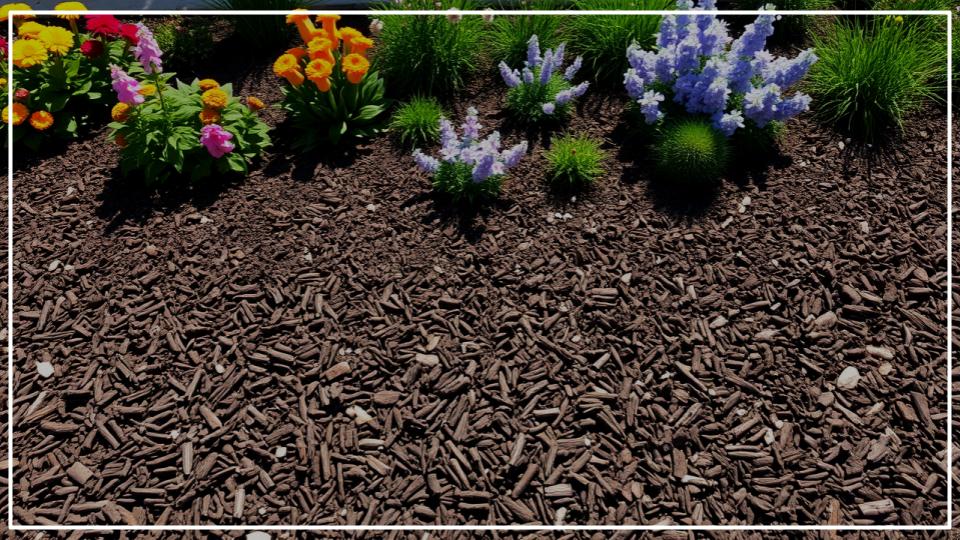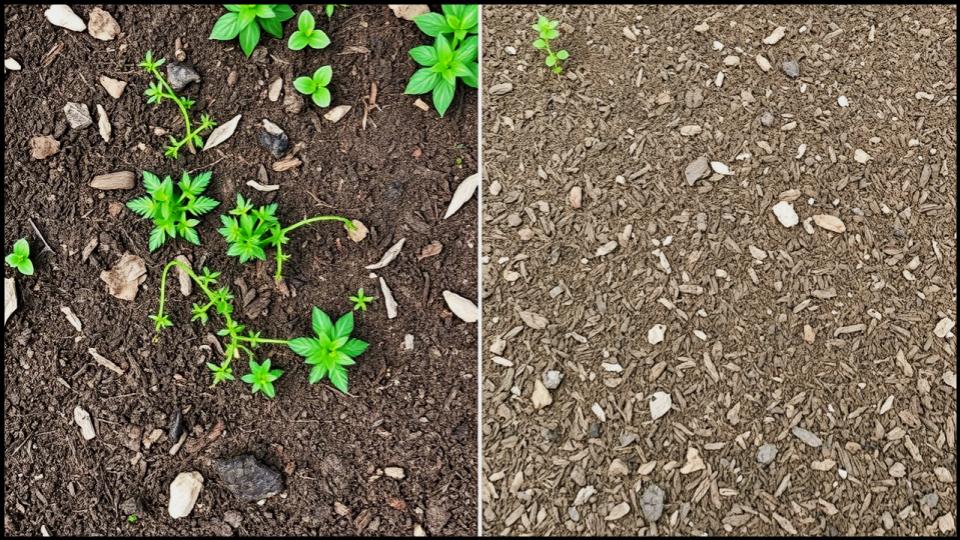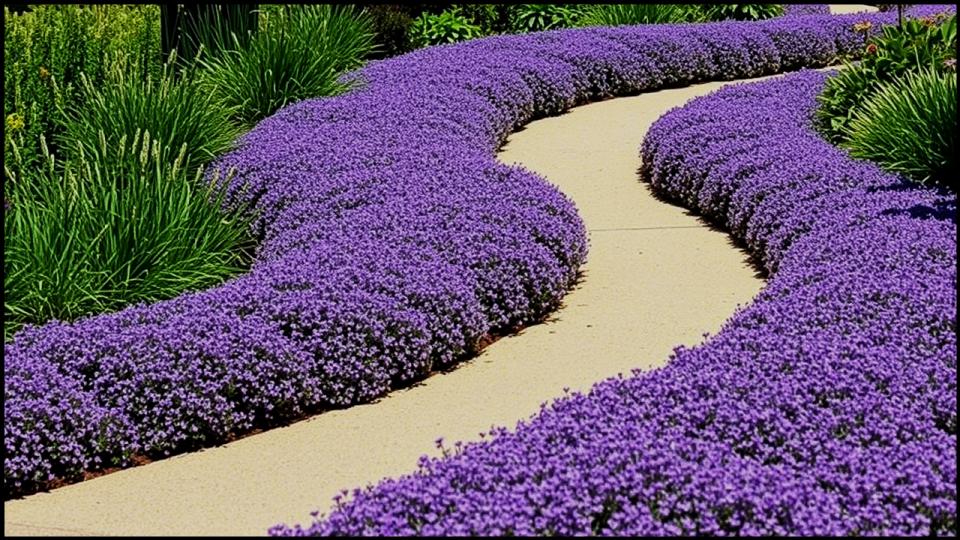There’s a quiet rhythm to a well-tended garden—a sense of intentional beauty where vibrant blooms and lush foliage take center stage. Yet, for so many of us, that peaceful rhythm is constantly interrupted by the jarring, seemingly endless task of pulling weeds. We spend hours on our knees, yanking out dandelions, purslane, and crabgrass, only to see them return with frustrating persistence. But what if I told you that the most significant mistake we make, the one that essentially rolls out the welcome mat for these intruders, has nothing to do with the weeds themselves?

The number one Gardening Mistake that invites weeds into your yard is leaving your soil bare. It’s that simple. Nature abhors a vacuum, and a patch of naked earth is a glaring vacancy sign for every opportunistic weed seed in the vicinity. In this guide, we’ll explore why covering bare soil in the garden is the most crucial principle of garden weed prevention. You’ll learn not just how to stop fighting weeds, but how to cultivate a garden so full and resilient that weeds simply don’t stand a chance.
Quick Tips: The Path to a Weed-Resistant Garden
Short on time? Here’s what you need to know to transform your approach to weeds:
- Never Leave Soil Exposed: Bare soil is an open invitation for weed seeds to germinate. Always aim to have it covered.
- Embrace Mulch: A 2- to 3-inch layer of organic mulch is your best friend. It blocks light, conserves moisture for your plants, and smothers weed seedlings.
- Plant Densely: Use “living mulch” or groundcovers to fill in gaps. Tightly spaced plants naturally shade out and outcompete weeds.
- Water Wisely: Use drip irrigation or soaker hoses to deliver water directly to your plants’ roots, not to the surrounding bare soil where weeds can sprout.
- Minimize Soil Disturbance: When you do have to weed, disturb the soil as little as possible to avoid bringing new weed seeds to the surface.
The Surprising Culprit: Why Bare Soil Is Your Garden’s Worst Enemy
In my years as a horticulturist, I’ve seen countless gardeners invest in the best plants and amendments, only to be discouraged by a constant battle with weeds. The common thread is almost always stretches of exposed soil between their prized plantings. Think of it from a plant’s perspective: open, sunlit, and fertile ground is prime real estate. Unfortunately, weeds are often faster and more aggressive prospectors than our cultivated ornamentals.
According to horticultural experts at several university extensions, including the University of Nevada, Reno, this is a fundamental principle of nature. Weed seeds are everywhere—tens of thousands can exist in a single square foot of soil, lying dormant and waiting for the right conditions. The primary trigger for many of these seeds to germinate is exposure to light. When you leave the soil bare, you’re essentially turning on a giant green light, signaling that it’s time to grow.
Furthermore, bare soil is prone to erosion from wind and rain, and it struggles to retain moisture, leading to a stressed environment. And which plants are best adapted to thrive in stressed environments? You guessed it: weeds.

The Golden Rule: Always Cover Your Soil
The solution, then, is beautifully simple: cover your soil. This single practice is the cornerstone of effective and elegant garden weed prevention. By creating a barrier between the weed seeds in the soil and the sunlight they need to sprout, you fundamentally change the dynamic of your garden. You are no longer just reacting to weeds; you are proactively creating an environment that discourages them from the start.
There are two primary, and equally beautiful, ways to do this: with a layer of mulch or with a carpet of living plants.
The Art of Mulching: Your First Line of Defense
Mulch is any material applied to the surface of the soil, and it is a gardener’s most powerful tool. A proper layer of mulch smothers emerging seedlings, keeps the soil cool and moist for your desirable plants, and, as it breaks down, enriches the soil with organic matter. I’ve found in my own garden that a consistent mulching practice cuts down my weeding time by at least 80%.
When considering mulching techniques, you have several options:
- Organic Mulches: These are materials that decompose over time, improving soil health.
- Shredded Hardwood or Bark: A classic and attractive choice for perennial beds and around trees and shrubs. It breaks down slowly and stays in place well. Aim for a depth of 2 to 3 inches. Any deeper can starve the soil of oxygen.
- Pine Straw: A wonderful, lighter-weight option, especially for acid-loving plants. It interlocks to form a mat that is excellent at suppressing weeds.
- Compost: Using your own garden compost as a top-dressing is a fantastic way to nourish your soil while suppressing weeds. It’s particularly effective in vegetable gardens.
- Leaf Mold or Shredded Leaves: A free and nutrient-rich option. Shredding them with a lawnmower first prevents them from forming a soggy, impenetrable mat.
A study from Michigan State University highlights that organic mulches not only block weed growth but also regulate soil temperature and moisture, creating a healthier environment for plant roots and beneficial soil microbes.
For an extra layer of suppression in a new bed, many gardeners, myself included, swear by the newspaper or cardboard trick. Lay down a few overlapping sheets of plain brown cardboard or a thick layer of newspaper (avoid glossy pages) directly on the soil, water it down, and then apply your mulch on top. As mentioned by Texas AM AgriLife Extension, this combination can block even the most stubborn perennial weeds for an entire season.
TOOLS AND MATERIALS BOX:
- Wheelbarrow: For easily transporting mulch.
- Garden Fork or Pitchfork: To loosen and spread bulky mulches like shredded bark.
- Sturdy Garden Gloves: To protect your hands.
- Mulch: Choose your preferred type—shredded bark, pine straw, or compost.
- (Optional) Cardboard or Newspaper: For an effective weed-blocking base layer.]
Planting for Fullness: Using Living Mulch
The other approach, and perhaps the most beautiful, is to use living mulch. This involves planting dense groundcovers and other low-growing plants to cover the soil, creating a living carpet that leaves no room for weeds. This method mimics how plants grow in nature, where every niche is filled.
Choosing the right groundcover is key. You want something that will spread to form a dense mat but won’t become an invasive thug that outcompetes your feature plants.
My Go-To Varieties for Living Mulch:
- For Sun: Creeping Thyme (Thymus serpyllum) is wonderfully fragrant and tough, while Roman Chamomile (Chamaemelum nobile) creates a soft, feathery mat. For a flowering option, Creeping Phlox (Phlox subulata) is spectacular in the spring.
- For Shade: Sweet Woodruff (Galium odoratum) has delicate white flowers and fragrant foliage. Japanese Pachysandra (Pachysandra terminalis) is an evergreen workhorse for deep shade. Ajuga (Ajuga reptans), or bugleweed, offers beautiful foliage in shades of bronze and purple.
According to the University of Illinois Extension, living mulches provide excellent weed suppression through competition for light, water, and nutrients. The trick is to plant them closely enough that their foliage touches once mature, creating a continuous canopy that shades the soil completely.

Beyond Covering: Smart Habits for Long-Term Weed Prevention
While covering the soil is the single most impactful strategy, a few supporting habits can elevate your garden from low-weed to virtually no-weed.
Water with Intention
Overhead sprinklers are notoriously inefficient and are great at watering weeds. They spray indiscriminately, providing moisture to every square inch of your garden, including the dormant weed seeds you’re trying to suppress.
Instead, deliver water directly where it’s needed: at the base of your plants. Soaker hoses and drip irrigation are fantastic for this. They slowly release water into the soil, keeping the root zones of your plants moist while leaving the surrounding, mulched soil surface relatively dry. A dry surface is an inhospitable place for a weed seed to germinate, as confirmed by research from Oregon State University, which notes that subsurface irrigation is an effective weed management tool.
The “Stale Seedbed” Technique for New Beds
When establishing a new garden bed from scratch, I often employ a technique favored by organic farmers called the “stale seedbed.” As outlined by the University of Wisconsin-Madison, the process is simple but effective.
- Prepare the bed for planting as you normally would (tilling, adding compost, etc.).
- Water the bed thoroughly to encourage weed seeds to germinate.
- Wait one to two weeks. A flush of tiny green seedlings will appear.
- Kill these young weeds with a very shallow hoeing, a flame weeder, or by covering them with a tarp for a few days. The key is to disturb the soil as little as possible.
- Plant your desired crops or flowers into the “stale” bed, which now has a much lower population of ready-to-sprout weed seeds.
Mindful Weeding: Do No Harm
Even in the most well-managed garden, a few weeds will inevitably appear. When you pull them, be strategic. Yanking a large weed can disturb a significant amount of soil, bringing a fresh batch of weed seeds to the surface. Instead, try to pull weeds when they are small and the soil is moist, which minimizes soil disturbance. For shallow-rooted annuals, a sharp scuffle hoe can slice them off just below the soil line without churning the earth. Immediately patch any bare spot created with a bit of mulch.
A Garden Liberated
Imagine your garden not as a battlefield, but as a thriving, self-sustaining community of plants. By abandoning the mistake of bare soil in the garden, you shift from a mindset of constant combat to one of intelligent cultivation. Covering the ground—whether with an elegant layer of dark mulch or a lush carpet of living groundcover—is the most profound change you can make. It is a declaration that this space is reserved for beauty, for the plants you have chosen and nurtured.
Now you are equipped with the single most effective strategy for garden weed prevention. You can spend less time on your knees pulling intruders and more time enjoying the beautiful, serene space you’ve created. Your plants will be healthier, your soil will be richer, and your time will be your own again.
Read More
These 15 Garden Water Features Will Make You Fall in Love with Your Garden Again
